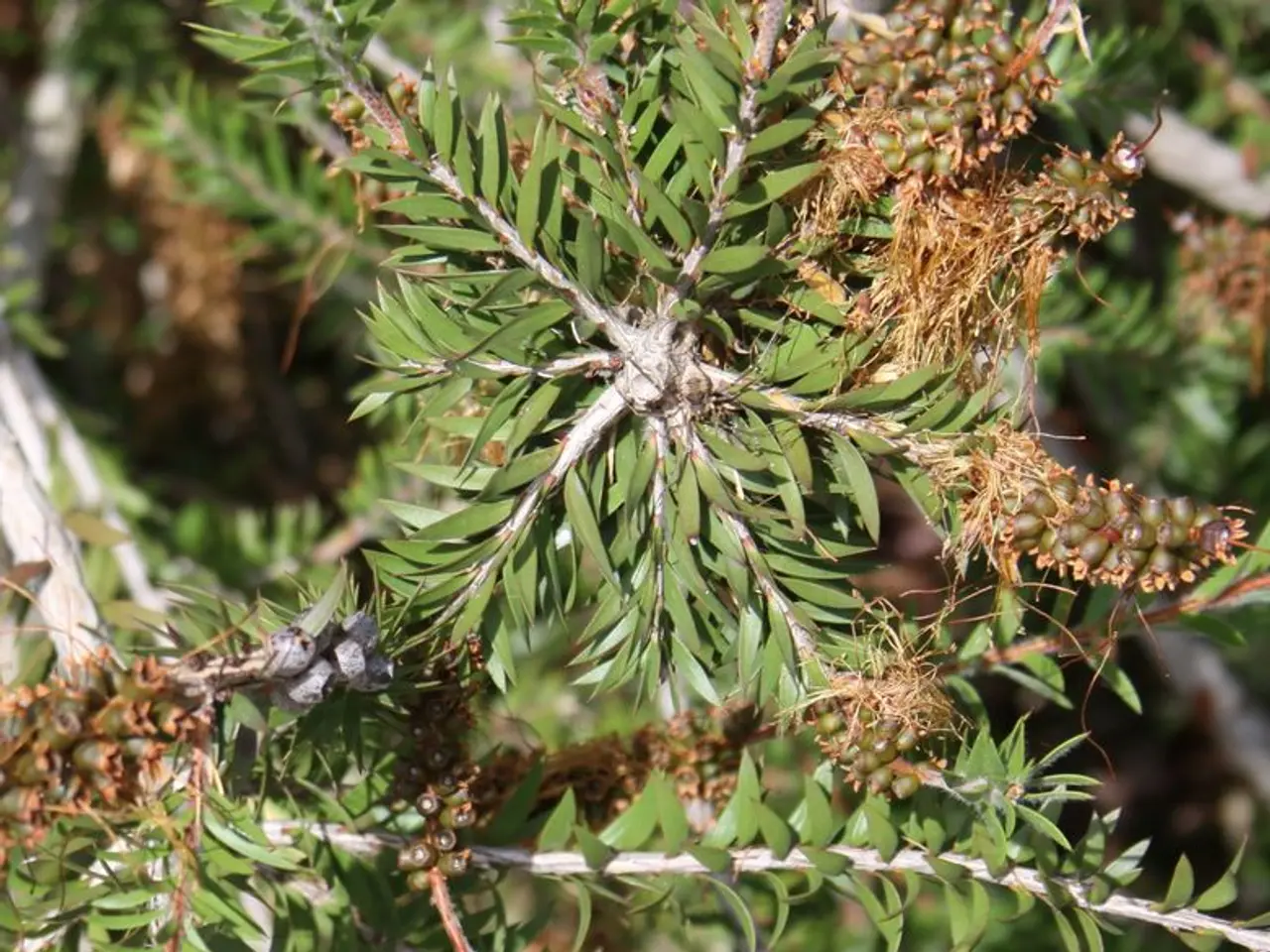Pear Tree Winter Pruning Techniques Detailed
In the heart of winter, when the pear trees stand bare and dormant, a crucial task awaits: pruning. This essential practice not only shapes the trees but also boosts their health, productivity, and resilience.
Loppers and pruning shears, along with a saw, are indispensable tools for winter pruning. These tools help manage thicker branches that are too big for shears, and cut back long branches in mature pear trees. The goal is to keep the trees healthy and productive by thinning out the center and shortening long branches.
The best time to prune is when the temperature is above freezing, making it easier to handle the branches without worrying about frostbite. Winter pruning helps pear trees focus their energy on producing fruit instead of growing unnecessary branches. This timing also encourages new growth come spring, leading to more fruit production and enhanced growth.
The best winter pruning techniques for pear trees in cold climates focus on pruning during the dormant season—typically late winter before bud break—to encourage strong structural growth and improve fruit production. Key techniques include:
- Pruning when the tree is fully dormant, from late winter to early spring, before growth resumes. This timing helps avoid cold damage to fresh cuts and allows the tree to heal quickly when temperatures rise.
- Removing dead, damaged, or diseased wood to maintain tree health and reduce pest problems.
- Cutting back older, unproductive wood to encourage new shoots. Pear trees produce fruit mostly on 2- to 3-year-old wood, so thinning older branches helps maintain fruiting wood and productive growth.
- Opening the tree canopy by cutting branches to improve sunlight penetration and air circulation. This reduces disease risk, improves fruit quality, and makes harvesting easier.
- Thinning out excessive shoots and water sprouts that consume energy but bear little fruit. Winter pruning promotes strong structural growth, unlike summer pruning which controls excessive growth.
Benefits of winter pruning for pear trees in cold climates include:
- Encouraged strong new growth and better tree structure for long-term health and yield.
- Improved sunlight and airflow in the canopy, reducing fungal disease problems and enhancing fruit quality.
- Removal of weak or damaged wood enhances overall vigor and reduces winter injury risk.
- Stimulated flower bud development, leading to better fruit set in spring.
In cold climates, selecting cold-hardy pear varieties and matching chill hours to the local climate is also important to support healthy dormancy and flowering, complementing good pruning practices.
Safety glasses and gloves are worn to protect the eyes and hands during pruning. Crossing branches should be pruned if they are rubbing against each other. Improved airflow helps prevent diseases, better sunlight exposure is crucial for healthy growth, and shaping the trees makes them sturdier and less likely to break during storms. Pruning in winter reduces the chances of pests making a home in the trees due to cutting away dead or diseased branches.
Using the right tools makes a world of difference for pruning pear trees effectively. For larger limbs that need more power, a hand saw is used.
For young pear trees, the goal is to shape them by cutting back the tips of the branches and removing weak branches. This not only helps the tree grow stronger but also makes it easier to manage as it matures.
In summary, winter pruning for pear trees in cold climates involves dormant-season cuts focused on structural thinning, removal of old wood and damaged limbs, and canopy opening to maximize sunlight and air movement. These practices support healthy growth, reduce disease, and improve fruit quality and yield.
Home-and-garden enthusiasts seeking to enhance their pear tree lifestyle might find winter pruning essential, as it helps maintain tree health, productivity, and resilience. By employing appropriate tools like loppers, pruning shears, saws, and hand saws, they can achieve effective winter pruning, shaping their trees, and ensuring strong new growth and improved fruit yield come spring.






